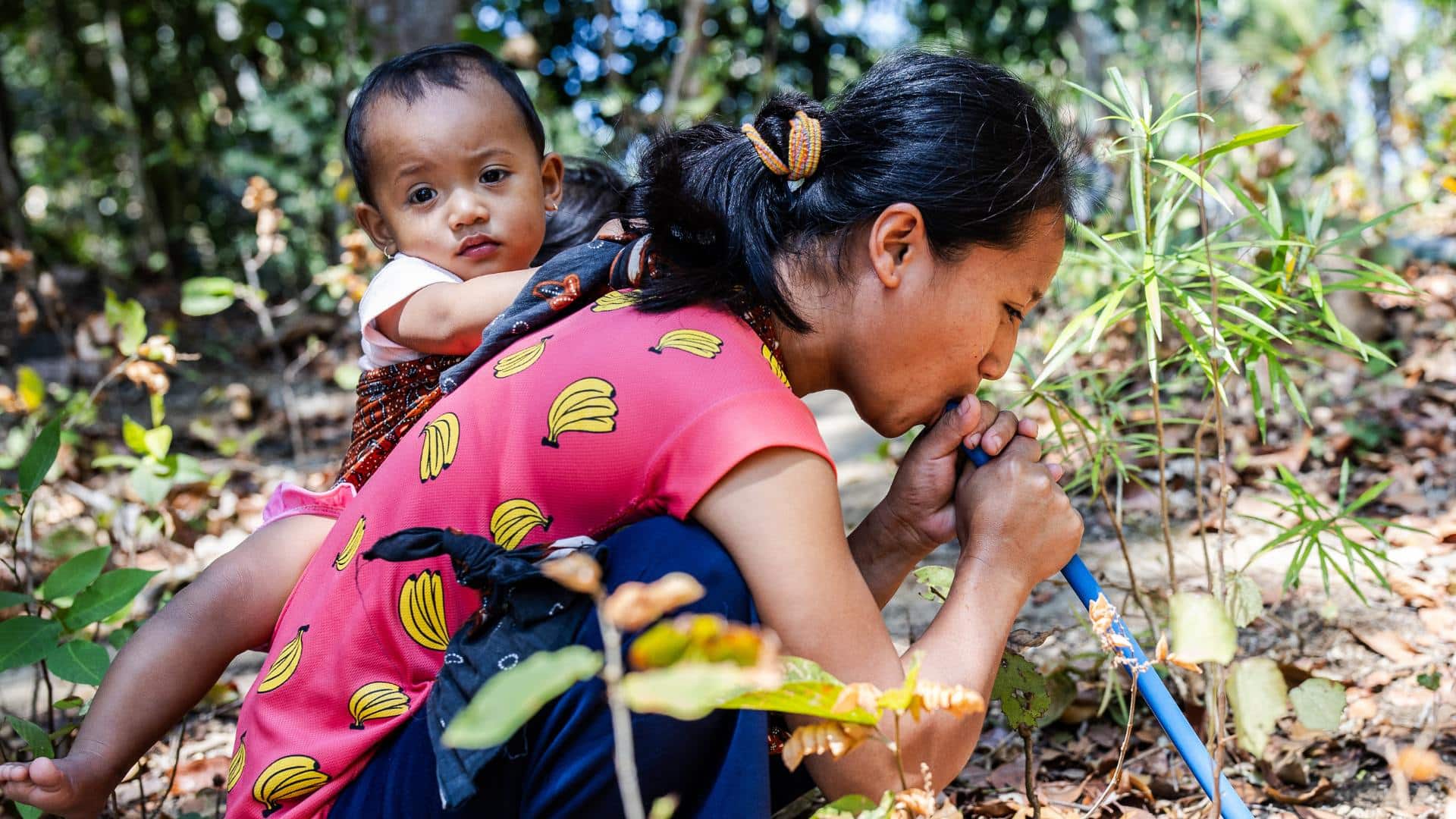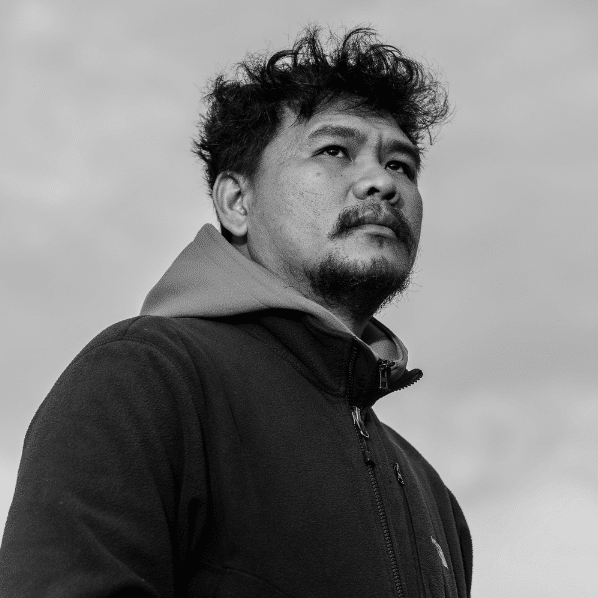On the island of Java, climate change has disrupted the traditional weather cycles, leaving residents trying to figure out how to survive months without rain.

Desi (27) carries Tiffany, her child while taking water from the only source of water by sucking it up and flowing it through a hose to her house during drought season in Selopamioro Village, Bantul Regency, Yogyakarta Province, Indonesia on 5 September 2024. (Credit: Garry Lotulung)
This article was produced exclusively for News Decoder’s global news service. It is through articles like this that News Decoder strives to provide context to complex global events and issues and teach global awareness through the lens of journalism. Learn how you can incorporate our resources and services into your classroom or educational program.
It’s been four long, hot months since Desi’s village in Yogyakarta province on the Indonesian island of Java has seen any rainfall. In four or five hours, water will fill the springs. It is then that Desi can take the water home so her family to drink and wash, irrigate their slowly dying crops and enable their livestock to drink.
“The drought in this village has been felt since April, and there has been no rain until now,” she said. “The wells in this area have dried out, so residents can only get water from the springs.”
Climate change has altered the rainfall pattern in Indonesia and shifted the beginning of the rainy and dry seasons as well as the planting season.
Indonesia is one of many countries around the world suffering from extreme drought caused by climate change. In Africa, the worst drought in decades forced the government of Zimbabwe to permit a mass slaughter of elephants. In South America, the Amazon River is at historically low levels because of its worst drought ever. In Europe, Spain has been suffering through extreme drought for two years. In some regions of the country, saltwater seeping into groundwater sources has made tap water too salty to drink.
In Indonesia, the ongoing long dry season has forced residents in the Yogyakarta province of Java to conserve water so that the springs will last throughout the year.
When the land is sucked dry
The drought that is currently hitting residents has resulted in disappearing sources of water for villagers. The drying up of springs has made it increasingly difficult for some villagers to obtain clean water to meet their daily needs.
The Meteorology, Climatology and Geophysics Agency has warned that the dry season may be drier and more intense this year than last year as a result of the phenomenon known as El Niño.
While the dry season will peak in August or September, its impacts have already been felt in many areas. A number of regional governments have reported scarcity of clean water, declining supply of irrigation water and potential crop failure.
Drought has plagued the residents in several subdistricts across Gunung Kidul and Bantul District for four months, forcing villagers to require clean water assistance for their daily needs and their livestock. The villagers of Tepus Village in Gunung Kidul Regency must walk 3 km while carrying water from a water tank to provide their livestock and plantation.
Thirsting for clean water
Drought has caused a clean water crisis that has resulted in difficulties in meeting daily needs, especially for drinking, cooking and hygiene. Agricultural crops have also been disrupted due to lack of water, threatening local food production and causing anxiety about food shortages in the future.
In Selopamioro Village, where Desi lives, residents fetch water from the springs by sucking it up and flowing it through a hose to their house. The villagers must wait for a certain time to get the water so that the collected water discharge is sufficient to fill each connected hose. In a day, the water source can be sucked five times: at 1 AM, 7 AM, 1 PM, 4:30 PM and 9 PM.
Sarjono, an elderly blind man, said he had spent almost Rp 300,000 (USD $20) to buy two tanks of water, each with a capacity of 5,000 litres for their daily needs and plantation, a considerable sum considering that the average Indonesian earns less than $10,000 each year.
The governor of Yogyakarta, Sri Sultan Hamengku Buwono X has set a Drought Disaster Emergency Alert Status from August 1 and extended it until the end of September this year, responding to the impact of drought in the dry season in this region. The government has distributed hundreds of clean water tanks with a capacity of five thousand litres to the Gunung Kidul district but there is no guarantee that it will be enough for the agricultural land there. In addition, Indonesia President Prabowo Subianto began building clean water installations for agricultural irrigation and assistance in installing pipes in Gunungkidul and Bantul Regencies.
The emergency alert status can be extended if the drought disaster in the Special Region of Yogyakarta continues to persist.
Many other cities and regencies have declared a state of emergency for the drought turning water efficiency and rainwater catchment, into national movement, distinct from environmental protection.
Three questions to consider:
- What is causing drought in regions of Indonesia?
- How are people on the island of Java adapting to changing patterns of rainfall?
- Do you know where the water you pour from your tap comes from?

Garry Lotulung is a freelance photojournalist and documentary photographer based in Jakarta. Lotulung has specialized in stories about the human condition, social change and environmental crises. Lotulung joined the international news agency Anadolu Agency in 2022 and has been a regular contributor and stringer since.
